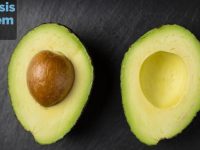Fructose may be the single most well-known—and most despised—food sugar. Since it entered our public spotlight, numerous wellness gurus and associated types have cast aspersions on its safety and linked it to any number of disease states.
So much has fructose been derided that even among those who don’t vilify sugar, it is often mistrusted. Given a choice between two nearly identical items—one that clearly labels (and contains) an ingredient as fructose and one that does not—most people will choose the item that doesn’t contain fructose. This is a situation in which there is no practical nutritional difference, only the shadings of anti-fructose bias tainting the sample.
Truly, the fervor that fructose inspires is a bit silly. To begin with, it’s a manufactured fear. Fructose was not of concern until people with better intentions than scientific insight campaigned against high fructose corn syrup and brought the sugar to our collective awareness. Now, not only are the foods that contain processed forms of fructose bad, but the stain has pooled backwards into the nutrient itself and we doubt even fruit for its nutrition now.
It’s also biochemically ridiculous. Fruit, and therefore fructose, has been an important part of the human diet for hundreds of thousands of years; we have well-established biochemical pathways to metabolize it. Indeed, much of the bad information on fructose derives from studies in animals that do not have frugivorous ancestors (like rats), and who should not be expected to process it as well as humans.
In my opinion, this attack on fructose likely has very little to do with the nutrient itself and more to do with the pleasure it can create. Fructose is the sweetest of all the sugars and therefore the most pleasurable; foods and nutrients that are inherently pleasurable are criticized far more regularly than foods that are less pleasurable, actual nutrition notwithstanding. Pleasure equates with sin, and sin is bad—and thus fructose, a pleasurable nutrient, is sinful and bad.
Unfortunately, there’s not a lot I can do about changing our moral perception of what makes foods “good” or “bad”, and there are better people for that argument anyway, such as Dr. Alan Levinowitz. What I can do is deconstruct the mythology surrounding fructose and reveal it for the rather mundane nutrient it actually is.
What Exactly Is Fructose?
Fructose is a 6-carbon monosaccharide (single sugar molecule) much like glucose and galactose. In fact, all three of these basic 6-carbon sugars share the exact same formula (C6H12O6), they just have slightly different shapes. There are also 3-, 4-, 5-, and 7-carbon sugars, but only the 6-carbon sugars are nutritionally important.
Fructose is so-called because it is primarily found in fruits (“fructus” is Latin for “fruit”), but it’s found in some root vegetables as well (such as beets), grasses like sugar cane, and honey. As mentioned earlier, pure fructose is sweeter than all other monosaccharides, and sucrose (a disaccharide that contains fructose) is the second sweetest caloric sugar. Thus, fructose is good at increasing food’s sweetness, and the more fructose a food contains, the sweeter it will be.
Biochemically, our body cannot run off fructose* as it can glucose and must first metabolize it. With glucose, once a food is digested into its constituent glucose molecules and absorbed, your body can use those individual glucoses for whatever it needs, whether ascending some rock or solving a crossword puzzle. With fructose, the first step is the liver.
*Sidenote: Technically our body can use fructose to power the muscles and maybe do other tasks—we do have the right metabolic pathways! However, these pathways have so much greater an affinity for glucose that they would only use fructose in the complete absence of glucose, a situation that will never occur. As such, fructose will always be metabolized into glucose. The one exception is sperm, which is fueled by fructose (but fructose that is created de novo by the seminal vesicle, not derived from the diet).
Assuming a caloric balance, the metabolic fate of 99-100% of all ingested fructose is conversion in the liver into liver glycogen to be later released as blood glucose. The only scenario in which we create fat from fructose is one in which our liver is overwhelmed by fructose and cannot store any more as glycogen. Since the liver can store 80-100 grams of glycogen at a time, and since the average American consumes only 45-65 grams of fructose daily, it’s unlikely to be overwhelmed by fructose alone; an overall caloric excess is necessary. But then, a caloric excess of any type, whether fat- or carbohydrate-derived, will cause fat synthesis and storage, so this isn’t particularly unique to fructose.
To sum up, fructose is…
- A 6-carbon monosaccharide closely related to glucose and galactose
- The sweetest sugar
- Metabolized by the liver into liver glycogen, AKA glucose
- No more likely to be stored as fat than any other macronutrient
Nothing particularly scary there, right?
So Is There Anything Bad About Fructose?
That isn’t to say that fructose is all good—like all nutrients (yes, all of them!) there is the potential for adverse reactions depending on the individual and their diet.
Fructose (In Large Amounts) Can and Does Cause GI Distress
First, fructose does have the propensity to cause gastrointestinal ailments in a way that no other monosaccharide does (though lactose, a disaccharide, will). Fructose is a fermentable carbohydrate—it can be digested by your gut bugs—and when it escapes absorption in the small intestine, those gut bugs will metabolize it themselves and cause symptoms like bloating, cramping, and flatulence. Furthermore, when too much fructose is consumed, it can cause osmotic diarrhea as well.
Thankfully, most humans can absorb somewhere between 15 and 30 grams of fructose per hour—in isolation, we absorb fructose poorly and may only absorb 15 grams per hour, but when digested in the presence of glucose our ability to absorb fructose is increased. Since fructose is always found in the presence of glucose (aside from the tolerance tests used to measure the limits of our absorption), the more practical range of absorption is closer to 25-30 grams per hour.
If fructose is consumed only in amounts less than 25-30 grams per hour, most or all of that fructose will be absorbed, and GI symptoms will only occur when fructose goes unabsorbed. Even then, symptoms will occur in relation to the amount of unabsorbed fructose, so if you just barely overconsume it’s unlikely you’ll experience any symptoms even if malabsorption is technically happening. By the time you reach 50 grams of fructose ingestion in a single hour, however, most people will experience some gut discomfort.
Given the typical fructose level of most fruits, most people would be hard pressed to consume enough in a single hour to cause themselves distress; only apples, pears, and grapes have even the slightest chance of causing fructose-related GI distress. Processed foods, on the other hand, can contain excessive amounts of fructose in much easier-to-consume forms—particular sodas. You should therefore be aware of the sugar content of your food and drink, and try to avoid consuming too much fructose in a single serving (most commonly used caloric sweeteners are roughly 50% fructose, so just divide the total sugars in half to reach an educated estimate).
One final note: fructose is just one of a handful of food compounds that can cause gut distress, and these compounds can work in concert with each other, so if you’re sensitive to other Fermentable Oligosaccharides, Disaccharides, Monosaccharides, and Polyols—FODMAPs, for short—you may need to exercise more caution. You should still be able to tolerate the usual 25 grams of fructose in conjunction with glucose, but any fiber or sugar alcohols present in addition to the fructose may lower your effective tolerance.
Fructose Can Raise the Risk of Gout for Those Already At Risk
A second, much smaller risk of fructose relates to gout. While nearly everyone has the potential to experience gut discomfort from overconsuming fructose, the fructose-gout link is only likely to affect a very small percentage of people who would be at risk for gout anyway.
For people who are predisposed to gout (an arthritic condition where uric acid from the blood crystallizes in the joints and connective tissue, causing pain), fructose can increase their risk by slightly increasing their blood uric acid levels. Since it’s the crystallization of the uric acid that actually causes gout, and since fructose doesn’t actually cause that to happen (it’s likely primarily genetic), you aren’t going to suddenly develop gout unless you already had the risk.
If you have a family history of gout or have suffered from it personally, then you may want to be aware of your total fructose consumption along with the other nutrients that increase risk. If you don’t have any risk, then don’t worry: fructose cannot cause it.
Fructose Has Benefits, Too
Okay, so assuming you don’t have gout and aren’t going to drink a liter of soda in an hour or less, then fructose has some benefits as well.
Increased Speed of Absorption
Sometimes you need more carbohydrates in an hour than glucose alone would allow. With glucose, you can absorb up to around 60 grams per hour, and normally that would be the hard-and-fast cap for carbohydrate absorption—but fructose uses a different channel for absorption, and as a result can boost total carbohydrate absorption by an additional 30 grams per hour!
Granted, most climbers don’t really need to absorb 90 grams of carbohydrates per hour, unlike top-tier cyclists who can use every gram of fuel provided to their body (I’m sure they would use IV glucose drips if it was practical or legal). Climbing just doesn’t have the same caloric requirements, and so fructose doesn’t provide a huge advantage.
Still, there are times when increased absorption could make a difference, such as when you have a limited time to recover and want to maximize glycogen recovery. In these situations, you can use fructose to great effect.
Liver Glycogen Recovery
As the liver is the main processing organ for fructose, it has a special (biochemical) affinity for the nutrient. That means that whenever both glucose and fructose are present, the liver will preferentially use fructose to recover liver glycogen, leaving the glucose in the blood to be picked up by the muscles for muscle glycogen recovery.
Furthermore, because the liver prefers fructose, it can take fructose from your diet (or a sports drink, say) and use it to recover liver glycogen even during exercise, thereby saving glucose for the working muscles and providing another source of glucose (liver glycogen) as well.
Again, this benefit is at its strongest when fuel is limited, so it helps endurance athletes competing in long events more than the average climber. Ultimately, it doesn’t really matter where the glucose comes from, so fructose only provides an advantage when the absorption of glucose gets capped, which only happens if you consume more than 60 grams per hour—something that climbers don’t usually need to do, performance-wise.
Let’s Clarify Some Myths About Fructose
As a nutrient that has attracted more than its fair share of negative press, a number of myths have sprung up surrounding the nutrient. Like any good myth, the following all have a small base in reality—but then take the usually paltry evidence way too far.
Fructose Is NOT a Major Factor in Non-Alcoholic Fatty Liver Disease
There has also been some concern that fructose can cause fat to be deposited in and around the liver, eventually leading to a condition known as Non-Alcoholic Fatty Liver Disease (or NAFLD). This disease is asymptomatic in and of itself, but can cause more serious conditions like liver cancer and liver failure.
The hypothesis behind the fructose-liver disease link is that fructose, in excess amounts, causes de novo lipogenesis (or “new fat creation”) specifically in the liver. As we learned already, the liver is the central processing organ for fructose, and fructose in excess amounts can cause fat storage, so there’s a certain amount of common sense to this hypothesis. There are also numerous rodent studies to support the hypothesis, which makes it seem pretty conclusive if you stop examining the evidence there.
Unfortunately (or fortunately, I suppose), the evidence from human studies is much thinner. Two recent systematic reviews/meta-analyses found that “the apparent association between indexes of liver health… and fructose or sucrose intake appear to be confounded by excessive energy intake” and that an “[i]socaloric exchange of fructose for other carbohydrates does not induce NAFLD changes in healthy participants.” Neither review outright states that fructose doesn’t cause fat deposition in the liver by itself, but rather make it clear that the much better supported, much more likely link to liver fat accumulation is excess caloric intake of any sort.
This doesn’t mean there’s absolutely no link between fructose and non-alcoholic fatty liver disease, just that a caloric excess appears to be necessary for liver fat accumulation. Furthermore, a caloric excess is also sufficient for liver fat accumulation (meaning it doesn’t require any additional inputs to occur)—so if fructose does have a role to play, it must be extremely minor compared to just overeating.
The moral of the story here is that excess calories are bad, and that fructose is bad when it contributes to an excessive caloric intake. In a eucaloric diet—a diet that contains just the right amount of calories—fructose doesn’t do anything.
Fructose Does Not Raise Blood Pressure
The actual cause of high blood pressure is surprisingly evasive. For a long time we pinned the blame almost solely on sodium, but that idea is passing out of vogue, even if we can be certain that sodium does play a role occasionally.
Similarly, some people inculpate fructose, another nutrient whose intake has dramatically increased in the modern era—but the evidence that fructose is a major player in blood pressure is even poorer than it was for sodium. And as with the link to non-alcoholic fatty liver disease, it’s a myth driven largely by extrapolating evidence from rat trials to humans, even when human trials have shown that no such link exists.
Large cohort trials and meta-analyses alike have demonstrated that fructose has no clinically significant effect on blood pressure—I say “clinically significant” because the meta-analysis actually showed that fructose could lower diastolic blood pressure, but only by about 1 mmHG, which is pretty meaningless when normal is between 60 and 80 mmHG. This is usually in comparison to the replacement of other carbohydrates with fructose, so it’s possible that replacing another nutrient like fat or protein with fructose would change the equation. However, since such a change would trigger numerous metabolic changes, it’s not a useful comparison to make.
In short, fructose may lower your diastolic blood pressure by an iota, but it’s a meaningless change. It certainly won’t increase your blood pressure.
Fructose Also Doesn’t Raise Cholesterol…
Finally, fructose isn’t going to give you high blood cholesterol—at least not when total fructose intake is less than 100 grams per day, an amount only exceeded by around 10% of Americans. If you’re eating more than 100 grams per day, chances are you also have a caloric excess (or are a professional cyclist), and that’s almost certainly going to have a greater negative impact on your cholesterol long-term than your fructose intake.
Fructose, By and Large, Is Equal to Glucose
Remember at the beginning of the article when I called fructose “mundane”? I meant it, and really, it is quite mundane. Despite the frenzy it has inspired, it behaves basically the same as glucose in most real-life scenarios. That means you can exchange fructose for glucose or glucose for fructose and 99% of the time nothing will happen—no adverse effects, no benefits, it’ll just be… the same.
Yes, you should be aware of exactly how fructose is different, and in what situations and why. You should be careful, for example, to not overdo soda or juice, or to avoid high-fructose foods if you’re prone to gout. You should also know how you can use fructose to improve recovery in time-limited situations. But most of the time, you will be fine just ignoring the whole issue altogether.
My best recommendation is to stop worrying about fructose and just give concern to your diet on the whole. This is true of all nutrients, and anytime you read or hear about how amazing or awful a particular food nutrient is you can be sure it’s been isolated from the overarching context of nutrition—food. If you demonize or worship any single nutrient or individual food, you’re missing the point. Eat more whole foods, fewer processed ones, and don’t worry about whether an apple or a guava is higher in fructose.















Brilliant! Just what I needed to read. I’m trying to push calorie levels higher and higher for sport, but had a fear about allowing table sugar to get any higher because I’d heard the fructose would overwhelm my liver, so I’ve been keeping sucrose low and drinking lots of milk to increase the calories because the lactose had no fructose element to it, but there comes a point where I can’t get any more complex carbs, leans meats and milk down my throat to increase my calorie intake. Now i know that maybe double desert might work for my needs!
really good article with all the nuances, still I would preffer to limit fructose comsumption, but now i would be less worry by the ocassional indulgence.